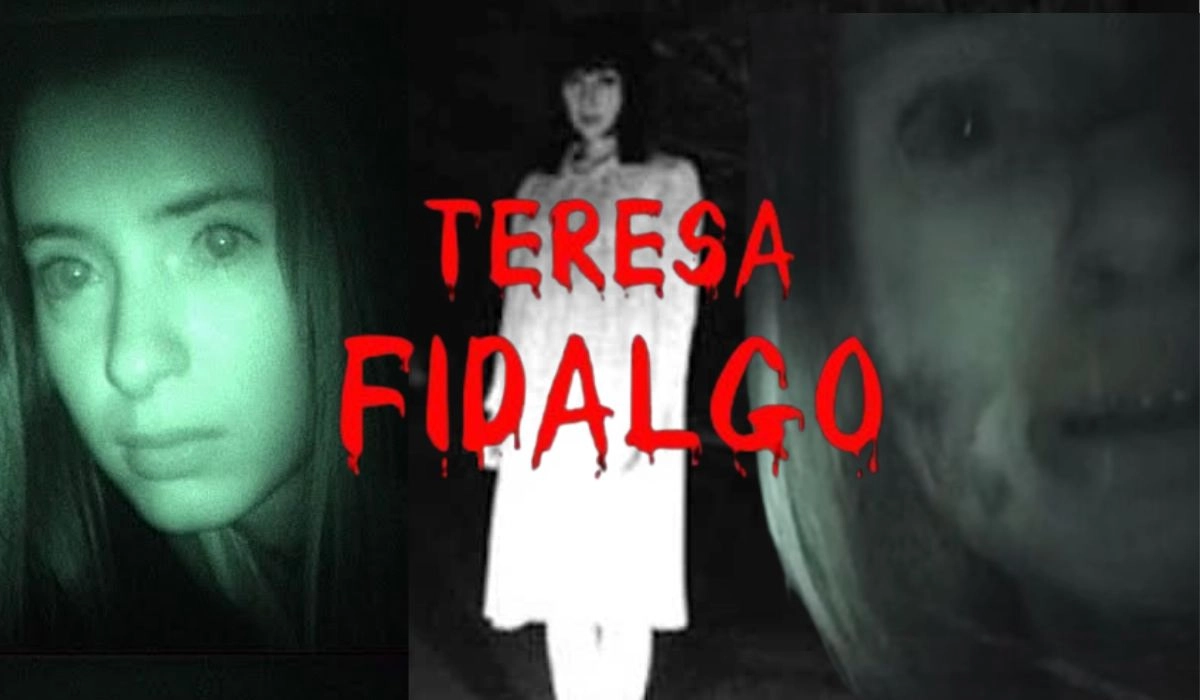Teresa Fidalgo: Unmasking The Internet's Ghost Story & Its Truth
Do you dare to delve into the digital shadows, where whispers of a spectral teenager have haunted the internet for years? The chilling saga of Teresa Fidalgo, a name that has become synonymous with online terror, is not a tale of the afterlife but a testament to the power of storytelling and the viral nature of the web.
The story, a chilling blend of urban legend and internet folklore, initially circulated through emails, text messages, and social media posts, promising a grim fate to those who failed to share it. These messages, steeped in a macabre warning, painted a picture of a ghostly figure, Teresa Fidalgo, the phantom of a young woman who supposedly met her untimely end in a car accident in Sintra, Portugal, back in 1983. The legend gained momentum, weaving its way through the digital landscape, captivating and frightening those who stumbled upon it. The alleged footage of the event first surfaced online on July 12th, 2003, swiftly propelling the myth into viral status, infecting the online world like a digital virus.
| Category | Details |
|---|---|
| Real Name | Fictional Character, No Real Identity |
| Origin | Based on the "A Curva" video by David Rebordo |
| Year of "Death" (in legend) | 1983 |
| Location (in legend) | Sintra, Portugal |
| Main Media Platforms | Email, Facebook, Instagram, Twitter, WhatsApp, TikTok |
| Associated Threats | Claims of misfortune or death for those who don't share the story |
| Creator of the Video | David Rebordo |
| Primary Purpose | Viral marketing of David Rebordo's short horror film and creation of viral internet hoax |
| Cultural impact | Generated fear, curiosity, and discussion about internet hoaxes and urban legends |
The story of Teresa Fidalgo, in its various iterations, has found its way into many languages. "Las cadenas malditas de Teresa Fidalgo" (The cursed chains of Teresa Fidalgo), and Polish and Turkish interpretations, illustrate the widespread reach of this digital ghost story. The narrative, often featuring a supposed video of the accident, exploited the viral potential of the internet and email chains, preying on human curiosity and fears. This strategy turned the story into a full-blown phenomenon in its own right.
It's a tale that echoes through the digital realm, warning of a spectral entity, a restless spirit said to haunt the internet. According to the myth, Teresa Fidalgo is the ethereal remnant of a lady who perished in an accident in Sintra, Portugal, back in 1983. The online circulation of the story, the video, and the associated ominous messages began to rapidly escalate, amplified by social media platforms like Facebook, Instagram, Twitter, WhatsApp, and TikTok. The video, the core of the legend, showed a car accident, purportedly starring the unfortunate Teresa. It became a fixture across YouTube, Instagram, and TikTok, generating nightmares for those who encountered it.
The chilling messages, like the one proclaiming, "I am Teresa Fidalgo and if you dont post this on 20 other photos I will sleep with you forever," were spammed across social media. This digital scare tactic was effective, tapping into the fears of the unsuspecting. There are stories that at the accident site, the responding emergency services were notified by a man named David, warning of the story, and though the body of Teresa was not present, police discovered her existence in official records.
The truth, however, is more grounded than ghostly. Teresa Fidalgo is a fictional construct, born from the mind of Portuguese producer David Rebordo for his short horror video, "A Curva" ("The Curve"). The narrative of Teresa haunting those who fail to share her story is a deliberate fabrication. The video, cleverly designed to exploit the vulnerabilities of social media, utilizes fear to generate engagement. The videos goal was to leverage the fear that people have by making people fear and share to get rid of the fear, which makes it the best tool to spread a story online.
The core of the myth revolves around a tragic car accident. It is alleged that Teresa Fidalgo met her end on a winding mountain road. The video itself, often attributed to this event, is merely a piece of cinematic illusion crafted by Rebordo, aimed to give the viewer the feeling of witnessing a real tragedy. The story is further perpetuated through the claims that her ghost now haunts those who share her story online.
The power of the Teresa Fidalgo story is a prime example of how the internet can amplify a simple narrative into a cultural phenomenon. The narrative, which often includes the warning that sharing the story is a matter of life and death, has persisted. The video, originally uploaded to YouTube, later found new life on platforms like TikTok and Instagram. It is a story designed to spread like a virus, causing unease and prompting shares.
The story's impact extends beyond mere digital chatter. It touches upon the anxieties surrounding death, the supernatural, and the power of internet narratives. It reveals the influence that producers and content creators have on our digital lives. The essence of the Teresa Fidalgo tale is not just fear, but also the power of storytelling and the ways it can manipulate our deepest instincts.
The "Teresa Fidalgo" phenomenon illustrates the power of the internet, creating both a sense of community and spreading misinformation. It is a modern urban legend, thriving on the fear of the unknown and the human tendency to share and believe sensational stories. It's a testament to the capacity of the digital world to generate both wonder and dread.



